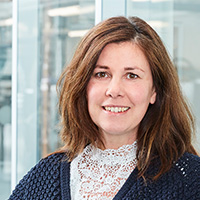This is part 2 of our CSRD journey, click here to read part 1.
CSRD reporting manager and governance
We established a project team to review the ESRS, which comprise 245 pages and 1,141 disclosures. Following this, we created the position of CSRD Reporting Manager, as this is a task that requires dedicated resources.
Double materiality
After setting up the team, we performed our first double materiality assessment. The concept of double materiality has two dimensions: impact materiality (the impact a company has on society and the environment) and financial materiality (the impact social or environmental topics have on the company itself). A sustainability issue meets the criterion of double materiality if it is material from either the impact perspective or financial perspective, or both. We had already performed materiality assessments, based on the Global Reporting Initiative (GRI), for our previous ESG reports, which helped us significantly in assessing double materiality according to CSRD guidelines.
Defining what’s material
The next step was to bring together a group of internal experts at Stahl to assess the impact (positive and negative, actual and potential, short, medium and long term) of our company on the environment and society for a long list of ESG-related topics as defined by the CSRD. These include climate change, energy, water consumption, air pollution and health and safety. In total, we assessed over 80 ESG topics, taking our stakeholders' views into consideration where possible. At the same time, we measured the potential related financial risks and opportunities for each topic.
The results gave us an overview of all 80+ topics and whether they are material for us, from both an impact and financial perspective. In 2023, the biggest impact for Stahl is related to the topics Climate change (E1), Pollution (E2) and Own workers (S1). The assessment also identified topics that will require further investigation in years to come.
These first results are not carved in stone: each year, we will repeat our double materiality assessment exercise to see whether those topics are still material and to incorporate additional feedback from our stakeholders.
Gap analysis
Following the double materiality assessment, we checked whether we already had the required information or whether we needed to produce it. This exercise is known as a gap analysis.
We found that a significant number of the mandatory disclosures are already included in our ESG report, including detailed Scope 1, 2 and 3 calculations for Stahl’s greenhouse gas emissions. We have been calculating this since 2017, and our reduction target is validated by the Science Based Targets initiative (SBTi). But there is plenty of work left to do for the remaining disclosures.
Working groups
We are establishing a working group for each of the standards, including our experts from areas such as operations, ESG, business finance, SHE and procurement. Each group is supported by a dedicated member of our leadership team. The goal of these groups is to prepare for the CSRD reporting requirements of our majority stakeholder over FY 2024, and then to prepare Stahl’s own CSRD report (over FY 2025) the following year. This report will be included in our annual financial statements (management report) according to CSRD requirements.
Their preparations for this report include collecting all the existing information and data that is relevant for CSRD and closing any 'gaps', for example by explaining our strategies, updating policies or setting targets and KPIs. We expect the groups to be necessary for at least two years.
Stakeholder dialogue
CSRD is also stimulating value chain thinking, and where possible, we have already included the views of our stakeholders in the double materiality assessment. In 2024, we will establish a structural stakeholder dialogue approach inviting representatives of our major stakeholder groups – which include customers, suppliers, shareholders, banks and local communities – to share their input via a survey, to all our major stakeholder groups. Where relevant, we will also perform interviews with selected stakeholders.
Not done learning today?
- Find out more about our commitment to sustainable development.
- This is part 2 of our CSRD journey, click here to read part 3.


